Marillion's 12th Studio Album, Anoraknophobia, is a single album released on 7th May 2001.
Current & Notable Release Versions:
2CD Special Edition: Studio album with enhanced bonus disc. 48 page digibook with Pre-order names in booklet. OUT OF PRINT.
1CD Digipack: 2016 Madfish reissue. Packaged in a standard digipack with CD booklet featuring artwork by Carl Glover.
2LP Vinyl Version: 2012 Vinyl version. Released on Madfish label. Packaged in a gatefold cover with printed inner sleeves.
MP3 Download Version: 256kbps MP3 audio download. This download includes all the tracks listed plus an artwork PDF with original album artwork & lyrics. The download also contains the bonus track 'Number One' which is not included on the original album.
March 2001
I decided early in the writing of Anoraknophobia to bring down most of my equipment from my home studio to the Racket Club. It was fun to be surrounded by computers and keyboards as well as my usual guitar set up. It meant that I could load up a drum loop or sequencer pattern to noodle along to in any lulls in the creative process. I think at times it provided a more modern backdrop for the music to develop on, pushing us in new directions. There's an amazing thing that happens when we improvise ideas together. It's like a kind of telepathy. Quite often we anticipate each others' radical change of direction as the music flows and evolves with a life of its own.
It becomes difficult after making so many albums to avoid the repetition that most artists succumb to, and so it was extremely gratifying to see that the desire to diversify was still as strong as ever within the band. The return of Dave Meagan as producer gave us not only, I feel, a sonically superior album, but one that felt fully developed. His dedication to the project really was incredible and the end results are a fitting tribute to the skill and judgment of someone who I consider to be a sixth member of the band.
I have never known a producer with such a passion and understanding of the heart and soul of the music.
March 2001
A word about drum loops. We've always had click tracks on various segments of the album that I've played to, but this time really was the first time that we've used full-blown drum loops; and if it's done properly it can be really good. It's like having another drummer in the room next to me, or having a serious percussionist, but I treat it the same as a click track: it's basically there to keep consistent timing, because drummers always speed up and slow down. I play to it as if it was another instrument, and it can give you a good sense of security, really, because I can play around, and whatever happens, the beat's always going to be there. If it wasn't for the drum loop, then it's usually Pete who's always there.
As far as "technology" affecting our live performances, I don't think it will. The bands I've seen live that usually play to loops, the first number or two you think "Great!" and after that you wonder "Where's the excitement?", so what Marillion usually do is not let the technology take over. I still play a steam-driven drum kit! So we do similar to, say, "Afraid of Sunlight" - the drum loop will start, and then when the real drums come in, that's it, I'm on my own. It's the same as when Mark uses particular samples that might be in a loop, rather than him triggering it and having it last for 8 bars or 16 bars. He'll be able to trigger the drum loop live every 4 beats, so if something speeds up a bit, he can trigger it again and stay in time.
Dave Meegan seems to understand where we're all coming from. When we're recording an album, he's got this capacity for absorbing so much information. You'll play something in a run-through, and then when we come to the recording, it'll be a month later and he'll come out of the control room saying, "Ian, play that thing that you played back in June at 10:30 in the morning!" And I'll say, "What bit?!" and he'll go to a reference tape to show me.
Nine times out of 10 I was just messing about, but Dave will really like it.
So you have to remember with Dave that everything you play is logged, but I totally trust him.
March 2001
Anoraknophobia started like any other album for me. We had obviously been talking about what we should do next, since the completion of .com and its subsequent tour. A date was set, and we got together to start jamming, and see what we came up with.
The first big difference to the last couple of CD's is that we didn't have any songs left over that we could use. So we were writing from scratch, and recording to mini disc anything that we felt was worth a second listen. This normally happens while we are jamming, and one of us - Mark or H, usually - will press the record button, in the hope that what ever it was we were doing that sounded good will be repeated.
This whole process can be soul destroying, and usually takes a couple of weeks before we are in the right frame of mind so we can be completely free-thinking and let the juices flow. In fact, there is a definite pattern to how long it takes before ideas recorded get better. Somewhere around discs six and eight is a good bet for ideas that we feel are any good.
Albums take on their own style quite early on. Although there doesn't seem to be an explanation for this, it has to do with the way in which we are playing together, what instruments we are using, lyrics, and a perception of what we are trying to achieve. It soon became apparent that we had some very strong song ideas, but at this time we were having disappointing meetings with record companies, and took the decision to make the album ourselves. This was made achievable with the pre-ordering idea, to hopefully fund the recording.
This step made the whole thing feel much more special to me, I think because we were writing for ourselves, with us owning the end result, and this had a big influence on creativity. It seemed that in music, as in business, we were not afraid to try anything, and to keep open minds. We also started talking to Dave Meegan about him getting involved. This was another very exciting moment; I love Dave's work, and have always completely trusted his judgment. He gets killer bass sounds, which is always a big issue for me! He came to the studio for a couple of days a week in the spring of last year, after listening to some of the ideas we had selected as good starting points for songs. "Between You and Me," and "Fruit of the Wild Rose" were amongst the batch of things that Dave picked out, and we also had some ideas that were centred around bass grooves that seemed to excite everyone.
Dave worked with us on the ideas that he felt were strongest, and we sorted out a deal for him to produce the CD. While working with Dave a few days a week and coming up with more material, we decided that we should talk to distributors about making the album available in the shops. However, before this happened, Lucy talked to EMI to see if they would be interested. I did not think that EMI would be so interested in what the band is doing now, although they have worked very well on the remasters and single sets. I was very surprised and pleased at the enthusiasm from everyone at EMI.
Meanwhile, we were now working with Dave five days a week in our studio, jamming for an hour or so in the morning. Then we would work on one of the songs, take it a few steps farther along, put new ideas in, change the feel... whatever we felt would help. We recorded every possible way there is to play these songs, and Dave would go away at the end of the day, listen back, and try to make sense of it all. Having Dave as a central figure made us work harder, and anyone who knows us will understand it is very hard to keep us focused on one thing, or even in the same room, for very long. Dave virtually locked us in the live room for hours on end recording, re-recording, adding a bit here, taking something out there. We would argue about ideas we were unsure about, but would record every event, just for the record (excuse the pun). Slowly every song was crafted in to shape, and some great new ideas were mixed in amongst them, which kept the whole thing fresh. It is a good feeling to be playing something you know to be well written and then add something new and exiting to it. I remember I had an electric 12-string idea that Dave wanted to add to one of the more straight-ahead pieces, and although they were in different time signatures, he was adamant it would work.
We spent some time talking and playing around with it, not being convinced, but it has become a favourite bit of the album for me. Putting unusual ideas together has become one of Dave's trademarks on this album, and has worked a treat; you'll hear it all over the place, and it keeps a good vibe going, as there is always something new and unusual around the corner. We decided to record the backing tracks in two halves: after getting the first four songs together, we recorded them before working on any more. This was done for various reasons, one being that I had to go to America to play with Transatlantic, something I was already committed to. But I think it was good to work on a few songs at a time as everything stayed new and exciting, and nothing got overlooked. I wanted to get a good bass sound, and record bass guitar along with the drums. We always record backing tracks as a whole band anyway, but I normally go back and replace what I did. This time I wanted the feel of Ian and myself doing it for real, as it happened. I did manage to achieve a lot of this, which I was pleased with. We would record five or six takes of a song, and Dave would edit together his favourite moments from the drums to make a drum track, then he would do the same with the bass. This was made easier, because we were using a combination of ProTools and Logic computer software, as well as digital tape, to record onto. This means we had a virtual studio on computer as well as real recording equipment. For editing or moving things around, and trying stuff out, the computer is absolutely brilliant. Word processing for music would be a good way to describe it.
I came back from good old US of A to find that the backing tracks had been enhanced by various guitar and keyboard overdubs, as well as vocals, and we then carried on with writing and arranging the next batch of songs. An amount of time passed and we were ready to record again. We must have spent another four or five days recording the backing tracks, and set about overdubbing. This was done after Dave had been in and edited his favourite versions of things together.
While the editing and overdubs were happening in the control room, we were busy in the live room getting ready for a fan club tour. This was born out of the idea to do a convention somewhere and just blew out of all proportion. This was another thing we had never trusted ourselves to do in the past, but found that all things are possible. I should point out that we had invaluable help from all the fan clubs involved, and Lucy found another hat to wear.
We had a plan to have the first four songs overdubbed, with vocals and everything, by the time we went out for the shows. We just managed it, with the band rehearsing during the day while one of us was needed from time to time to record something for Dave, sometimes it was a lead vocal, or a guitar part. A couple of times Dave wanted me to re-do some bass, he would usually have a version he had compiled if what he wanted to hear, but for what ever reason he wanted to hear me re-play it, or sometimes he wanted to hear a different sound. Then after we had got back to rehearsing some more, Steve would be back to singing in the evening, or Steve and myself would be trying some backing vocals.
We then went and played the fan club shows, which I feel were a thank you to everyone who had the faith and commitment to put their money behind what we were trying to achieve here. That was a great success, with a lot of fun had on the way. Then back to club Racket where Dave had been mixing the tracks and had various versions ready for our perusal and approval. They sounded great as expected, and with a few things tweaked here and there, we were ready to move on to the second lot, and finish them off.
I was getting ready to fly to Nashville just after Christmas and work on a second Transatlantic album, while finishing off these last few tracks, adding bits of bass harmonies here and there, and some guitar bits - where my youthful approach to guitar playing can sometimes be an added attraction. Then it was back to America while the rest of the band worked their magic, with our Merlin stirring away frantically at the virtual cauldron.
I arrived back in time for the start of the second lot of mixes, and to start rehearsing for a short Uni tour around Britain, which we have organised as a an experiment in reaching a younger audience (is Marillion having a mid life crisis?). From where we started with all of this, it seems that there is no end to what can be achieved when there is enough belief scattered around.
A Personal History : April 2001
I was a spotty 16 year old living on the north side of Dublin city when I took my first step into the world of music, setting up a Pirate Radio station in my bedroom. Once managing to get school out of the way by the age of 18, and having raised enough money from working in a warehouse during the day and a nightclub at night, I built a 4 track studio in my dad's garage, and literally seconds later started demo-ing all the local bands. At this stage I was also doing live sound for numerous bands, including my own band "Theatre de Luxe" in which I played drums and argued. And after a brief period working in a studio owned by the late Eamon "This is your Life" Andrews. I realized that career prospects in Dublin were pretty grim and London was calling.
After 2 months looking for a job in every London studio, I eventually got one at Trevor Horn's Sarm Studios as a tape-op. Here I spent 6 hard but exciting years training, working with the likes of "Frankie goes to Hollywood", "Petshop Boys", "Killing joke", "Yes", "Rush", and of course "Marillion" on Fugazi, but I think most of you know that old story by now.
In 1987 while freelancing from Sarm I returned to Dublin to engineer some of the "Joshua Tree" sessions for U2. This session was a real eye opener for me, I realized that my love was recording real Bands and as England was going trough a pretty bad patch where bands were concerned I knew it was time to set sail again, this time for America - Los Angeles to be exact - where the streets were paved with guitars and stars! I spent a year there mainly working with Californian bands, and it was here that I started producing records. But following a bad car crash and an earthquake, I decided it was time to return to the UK.
By 1988, London was buzzing: lots of bands and lots of work. I started engineering for the producer Stephen Hague and worked on acts like "New Order", "Pere Ubu", "PIL" and "The House Of Love". Stephen encouraged me to get back in to the world of production and mixing. As a result I ended up working on my own with PIL as a mixer and The House Of Love as producer. In 1989 I did more work for U2, this time for the "Rattle and Hum" movie. Over the next few years I produced albums for the likes of "The Power of Dreams", "Skin Games", The "Milltown Brothers" (this album led to working with the wonderful Stewart Every for the first time).
In 1992 I crossed paths with Marillion again, which resulted in the "Brave" album. This was probably both the most difficult, and most rewarding album that I had ever worked on. Straight after "Brave" I did another album for EMI, for an artist called Phil Campbell. . This almost led straight into the next Marillion album "Afraid of Sunlight". I was in total shock when they phoned up to ask me back to produce it. (How quickly their pain was forgotten!). This ended up been a gorgeous album and very close to my heart.
Following AOS and the birth of my first child I realized it was time for a change so I started to explore the mysterious world of MIDI, Programing, Sampling and Digital Audio, with a short break in late '96 to mix the beautiful "This Strange Engine".
In November '98 what was supposed to be a short trip to Oxford to record the Band "Animal House" ended up lasting for 17 months. And just as I was ready to return to Home and Family, guess who was on the phone again asking me to stay out in Oxford...Of course my favs the "Marillo's" and how could I refuse.
Thank God I didn't, Anoraknophobia ended up been one of the best, if not THE best album I've ever made.
The revolutionary pre-order idea for Anoraknophobia was a first for the music industry, and is now changing the way even major labels are running their businesses.
In total, 12674 albums were pre-ordered by fans, which allowed us to own our own songs for the first time in our career!
The pre-order "Special Edition" came in a deluxe 48-page hard-bound case with an extra enhanced CD. This version was only available to those who pre-ordered and is no longer available.
Following on from the Pre-Order concept, The double a-side single was sold to fans on a buy-one-get-one-for-free basis; fans then sent the extra single to local radio stations.
A 2CD Special Edition version of Anoraknophobia was only available to those who pre-ordered through this website before the album's release. Thanks again to the 13,000 people who helped make this album possible!
Disc 1
Between You and Me
Quartz
Map of the World
When I Meet God
The Fruit of the Wild Rose
Separated Out
This is the 21st Century
If My Heart Were a Ball it Would Roll Uphill
Disc 2
Number One
Fruit of the Wild Rose (Demo)
Separated Out (Demo)
Between You and Me (Mark Kelly Mix)
Number One (Recording Video)
Map of the World (Behind-the-Scenes Recording Video)


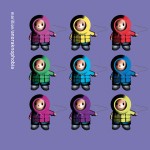
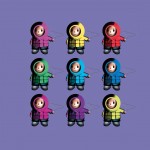
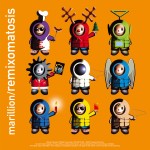
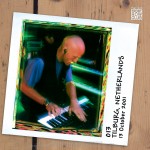
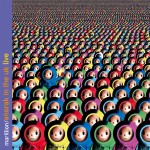
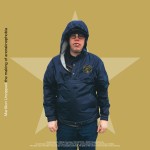
March 2001
It occurred to me about a year ago watching "Never Mind The Buzzcocks," or something like that, that we're starting to live in a 'take the piss' culture, and that having a cheap shot or ripping the piss out of somebody has become a national sport in this country, and all the easy targets are people who believe in something and have a passion. Our fans are the easiest people in the world to point the finger at and call anoraks, and the thing about these guys that are sitting there - the Mark Lamarrs and the Angus Deaytons of the world - whether you love or hate them, is that they never actually stand up and declare what they believe in themselves, because if they were to do that, then everybody else would point and laugh at them.
So really to declare a passion is to expose yourself to ridicule, and I personally would much rather have a world full of people that were passionate and believed in something and cared about something, than a load of two-dimensional types who stood around smirking and pointing at other people. I really just wanted to say, "We know you're all anoraks, and there's nothing wrong with it! We're anoraks too!"
The point of the title "Anoraknophobia" was no fear of it.
Anorak no phobia.